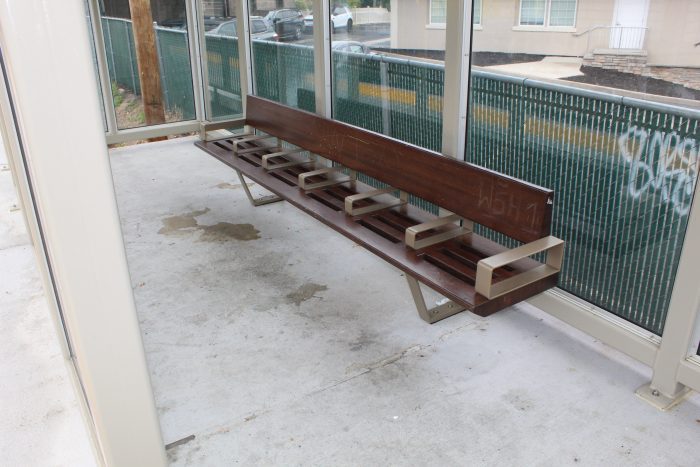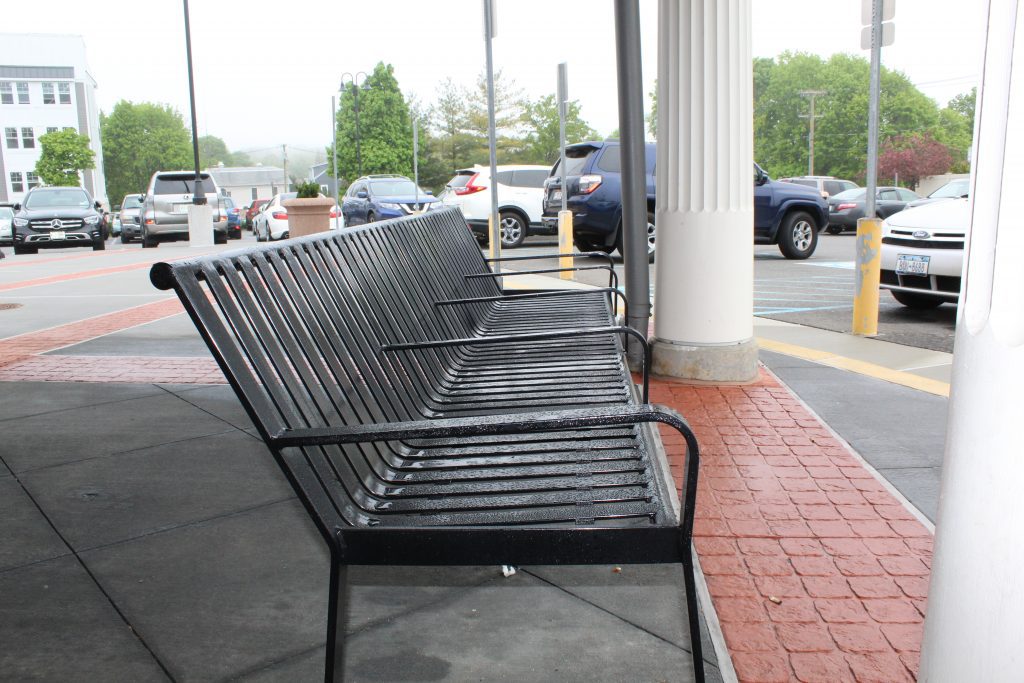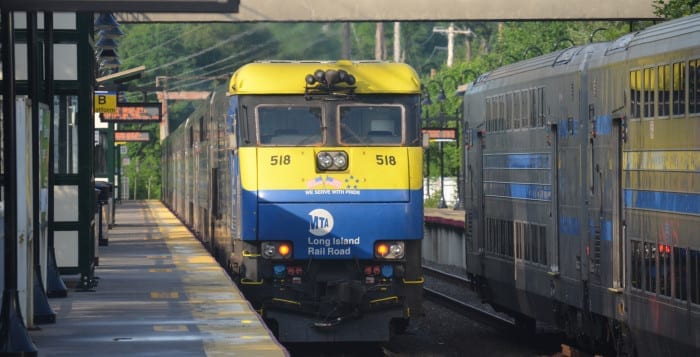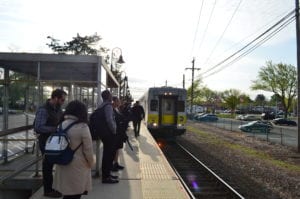The Port Jefferson Station/Terryville Civic Association held its Meet the Candidates forum at Comsewogue Public Library on Tuesday, Sept. 20.
The Democratic and Republican nominees for New York State’s 1st Senate District and 4th Assembly District attended this civic meeting. The candidates received time to deliver opening statements, then answered questions covering a range of local subjects, followed by closing remarks.

Introductions
Before entering elective office, incumbent state Sen. Anthony Palumbo (R-New Suffolk) worked as an attorney in the Suffolk County District Attorney’s Office. He was in private practice for roughly 10 years before running for the state Assembly in 2013. He served the 2nd Assembly District until 2020, after which he assumed his current position.
Challenging Palumbo is Democrat Skyler Johnson, a 22-year-old Mount Sinai native and former political aide to Southampton Village Mayor Jesse Warren. If Johnson were to win this November, he would become the youngest person to serve in the state Legislature since Theodore Roosevelt.
In the Assembly race, incumbent state Assemblyman Steve Englebright (D-Setauket) is also up for reelection. Englebright, a geologist by training, joined the state Assembly in 1992. Before that, he served as a Suffolk County legislator for nearly a decade.
Edward Flood is Englebright’s Republican challenger in this race. Flood serves as an assistant attorney for the Town of Brookhaven and is the town’s lead prosecutor for town code violations.
LIRR electrification
Each candidate supported electrifying the Port Jefferson Branch line of the Long Island Rail Road, with some variations in approach.
Englebright advocates moving the existing Port Jefferson train station onto the county-owned Lawrence Aviation property. This plan, the assemblyman believes, would bring value to the community in the form of cleaner air and higher property values.
“I am working to try to get the Long Island Rail Road to come into the modern age,” he said. “We will prevail. The first thing to do is to have a community that’s united. … If this community is supportive of that, that will be a big boost.”
Flood condemned the MTA for its historical neglect of Long Island communities. He seeks to pressure the MTA’s governing board and add a local representative to that body. “I don’t believe we have a local representative, and I don’t think anyone on that board cares much about us,” he said. “That needs to change.”
Johnson criticized the needless delays for residents traveling to New York City by rail. He favored allocating more state resources to address these concerns.
“It’s not the most fun trip getting onto the Long Island Rail Road,” he said. “We need to continually invest in the Long Island Rail Road because that will properly benefit our communities, it will help people commute, help people live better lives, and it will make our communities cleaner and safer.”
Palumbo underscored several of these points, backing his support behind moving the Port Jeff train station to the Lawrence Aviation property. “All of those issues are extremely important to this community,” he said. “I think we all agree that this is something that needs to be done.”
Homelessness
Another central topic for Port Jefferson Station/Terryville residents is homelessness.
Flood proposed that many of the problems associated with homelessness stem from alcohol and substance abuse. He proposed strengthening addiction treatment programs and mental health services.
“Unfortunately, addiction is rampant throughout the homeless community and possibly the reason why they are homeless,” the Assembly candidate said. “We need to do a better job finding resources to adequately treat people.”
Englebright approached the subject of homelessness through the lens of planning. According to him, this requires offering a coherent vision for the Port Jefferson Station area, much of that concentrated around managing the Lawrence Aviation property, followed by investment.
“That would make it possible for us to accelerate the investment into Port Jefferson Station itself,” he said. “We hear a lot of talk about transit-oriented development, and this is the appropriate place for that policy to be fully fleshed out.”
Johnson supported a “great investment into mental health” to ensure people experiencing homelessness receive the necessary tools to get off the streets. He also said the issue is tied to the affordability and housing crises on Long Island.
“We do not have proper affordable housing, and we do not have proper workforce housing on Long Island,” the state Senate candidate said. “I’m going to make sure that we do everything that we can to bring home the funds so that we are investing in housing projects, while investing in our critical infrastructure, our public transportation, our roads to make sure that we are keeping up with the flux of people coming into our community.”
Palumbo discussed homelessness as a multifaceted issue, requiring changes in affordable housing, enforcement practices and mental health services.
“I think, generally, Long Island is unaffordable,” he said. “We need to lower the cost of living on Long Island, make it all more affordable, and most importantly do what we can to deal with an affordable housing crisis.”
Concluding remarks
During their closing statements, the candidates were asked to provide their two highest legislative priorities that would also affect Port Jefferson Station/Terryville residents.
Johnson stated his two highest priorities would be affordability and infrastructure improvements. “We need to make sure that we are putting money back in the pockets of everyday people,” he said. “And I’m going to make sure that we do that, and we’re going to make sure that we are investing in our roads and infrastructure.”
Palumbo said his two highest priorities are closely linked to one another. He first hopes to alleviate the burden of high taxes and the unaffordable cost of living on Long Island, then tackle rising crime rates.
“I think other things will fall in place if we get control of the crime issue,” the state senator said. “Coupling that with affordability … we’re losing people for a number of reasons in New York, and we shouldn’t be losing anyone.” He added, “We’re an amazing state, and we need to do what we can to save it.”
Though he did not identify the two highest priority issues, Flood highlighted several matters he would like to remediate if elected. Among these are rising crime, bail reform and better state budgeting.
“I see firsthand some of the effects the state has put into place in terms of bail reform,” Flood said. “They’ve added extra hardships to prosecutors and those in criminal justice, and you see it in an increase of crime, in the inability of a district attorney to bring cases forward, and in that, you have local governments who are handcuffed in trying to comply with a lot of these laws.”
For Englebright, his two highest priorities are the electrification of the Port Jefferson line and better community planning. The assemblyman foresees many positive effects if the existing railyard relocates to the Lawrence Aviation property.
“This is, after all, Port Jefferson Station,” he said. “Our station area should be enhanced, and the plan that we put forward for that should not just be something that looks like South Brooklyn. It should look like a vision of what this community should look like when it looks itself in the mirror.” He concluded, “It should be a place of pride. I believe it should be a public park.”



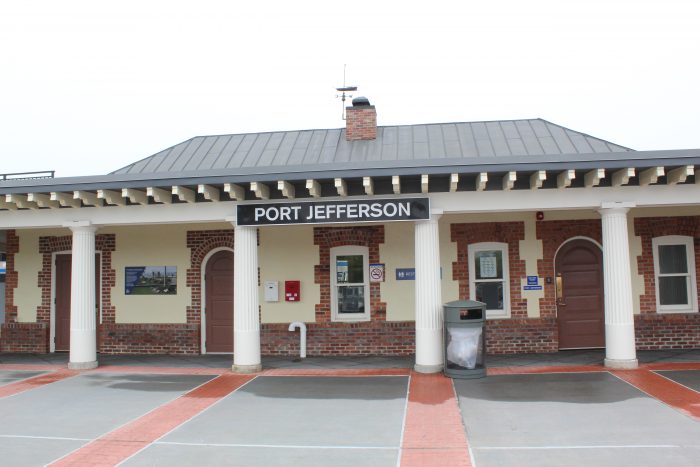

 The Station Street project has been in the works since 2016, when the village approved a master plan to revitalize Upper Port. As part of joint efforts between the village, the Town of Brookhaven, LIRR and the state Department of Transportation, the proposed Station Street would create a plaza that will help channel traffic from the main thoroughfare, alleviating congestion as drivers enter the village.
The Station Street project has been in the works since 2016, when the village approved a master plan to revitalize Upper Port. As part of joint efforts between the village, the Town of Brookhaven, LIRR and the state Department of Transportation, the proposed Station Street would create a plaza that will help channel traffic from the main thoroughfare, alleviating congestion as drivers enter the village.